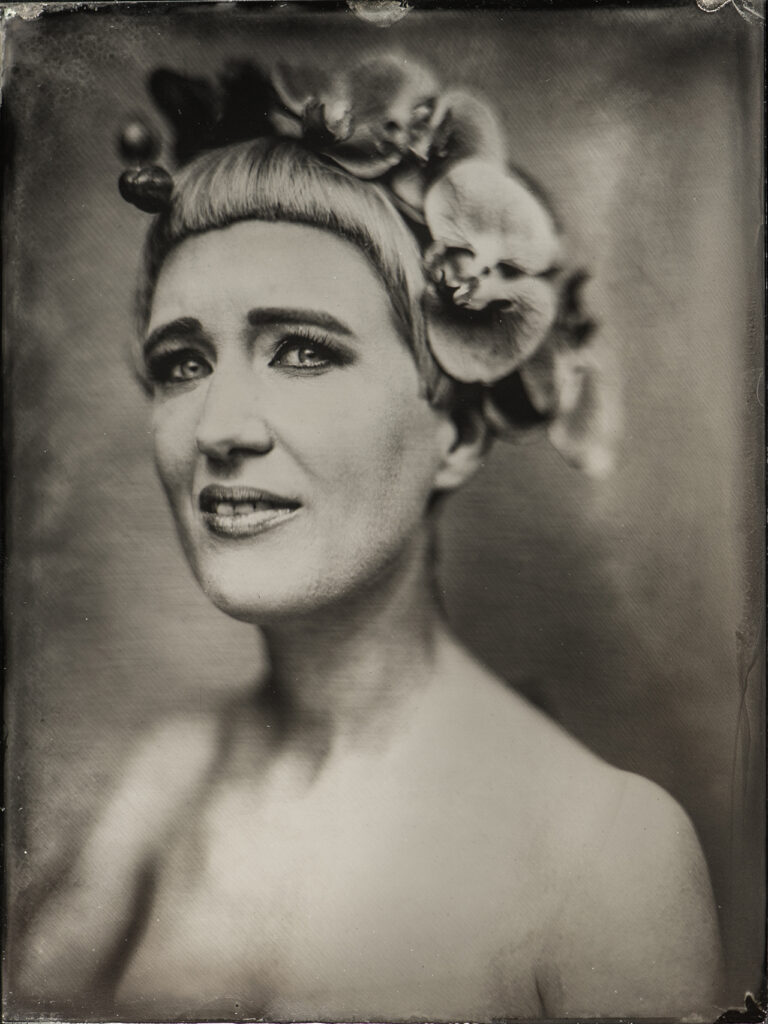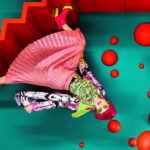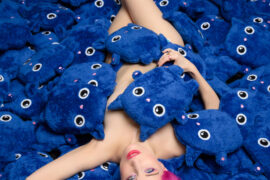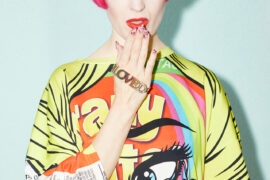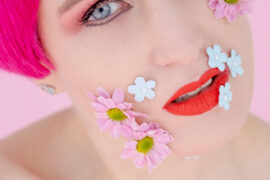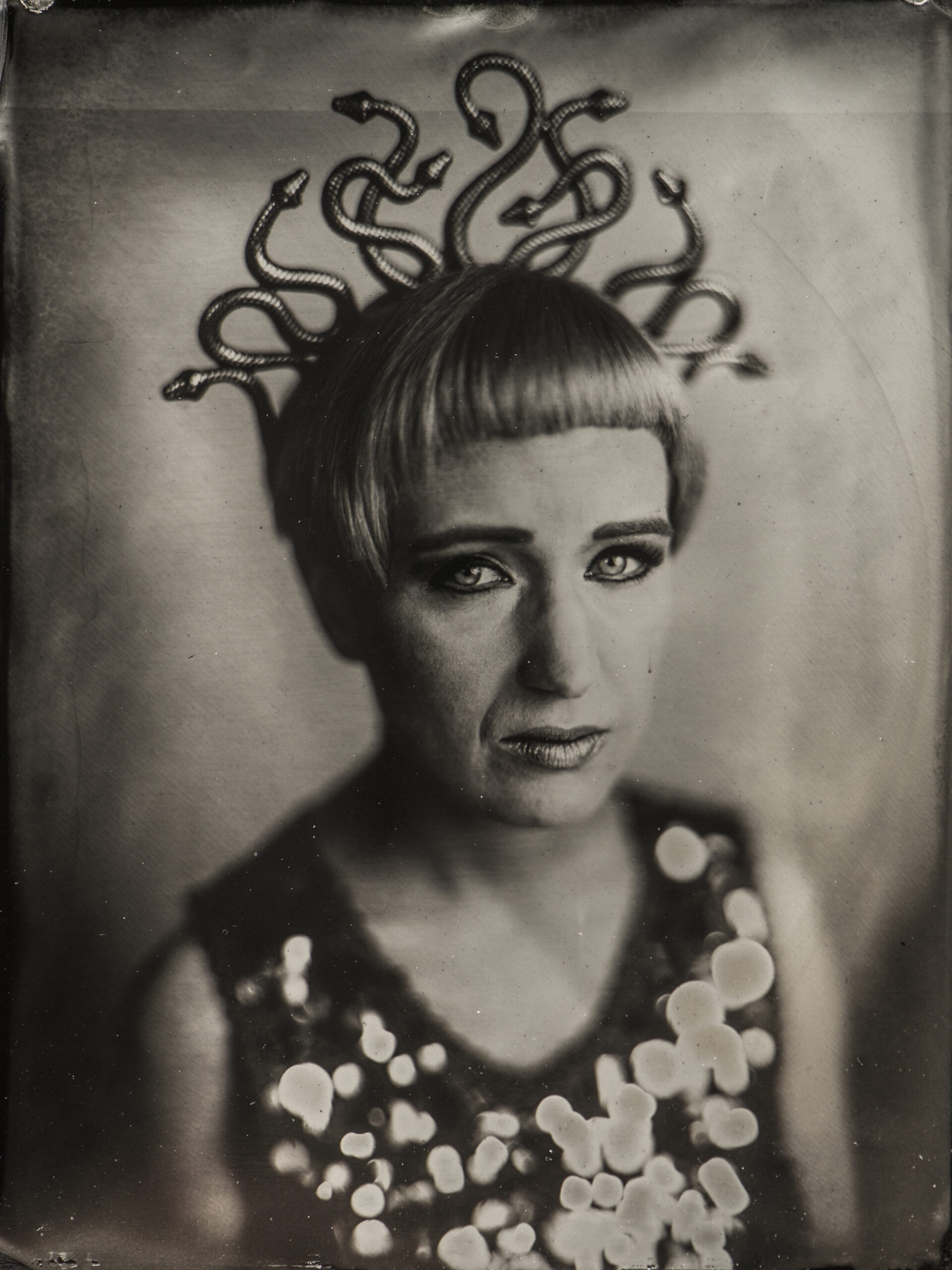
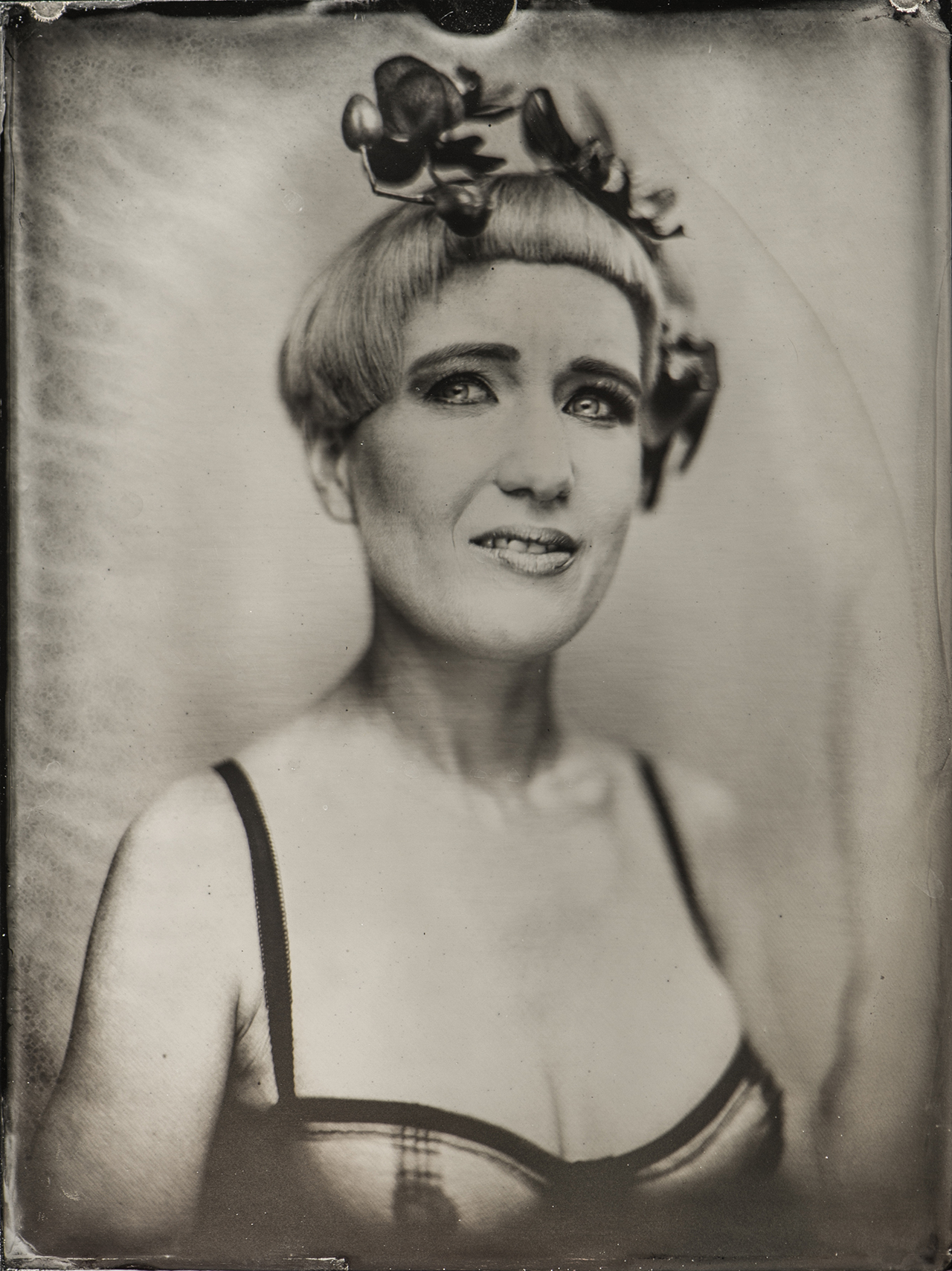
With those portraits, I make a time travel to 1850. Say hello to the version of a Sara that was revealed with wet plate photography. For once not in my beloved colourfulness, since we go back to a time before colour photography was invented.
I felt like my own grandmother having her only ever portrait taken. I had to sit still with my head on a headstand, while photographer Farid Laid prepared everything very carefully. A perfect light set-up was necessary before we started.
Farid Laid was inquisitive to see how the chemicals would react on my pink hair because with this technique, you can’t be sure what happens. We first did a few tests on glass plates until Farid said we were ready for the metal plates. The image was directly exposed onto the metal wet plate, inserted into the wooden large format camera. It took us more than five hours to make five or six pictures. What a difference to modern digital photography!
After taking a picture, it had to be developed in a darkroom immediately—a fascinating few seconds when the image appeared on the plate exposed to chemicals. The photos also needed to be varnished, and Farid said there was the danger to ruin them until the last second.
Farid is one of the very people who still work with wet plate photography, and he told me a lot about how he makes his own chemicals and his constant search to improve his practice. I was honoured to experience this unique process and be part of it. It’s entirely different from all pictures I had ever taken before. Ripped of colours, unretouched and pure. A wonderful time travel experience!

Pictures: Farid Laid

